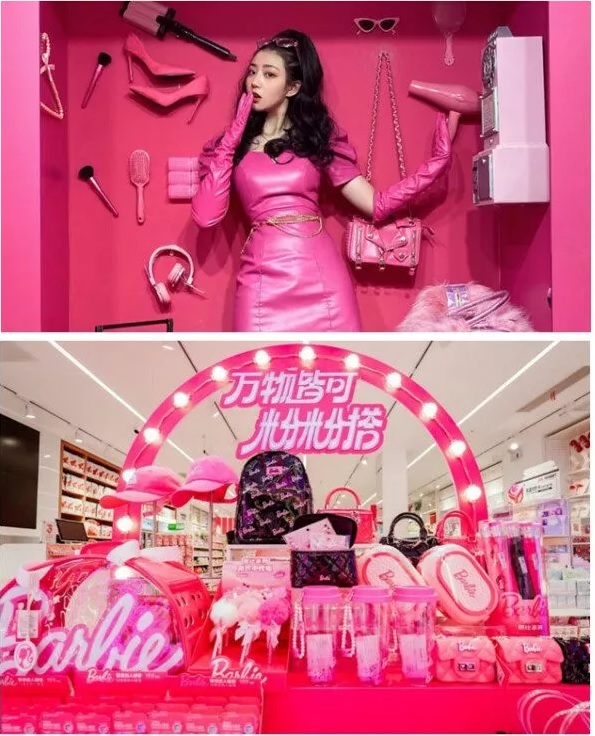In a blend of box-office success and retail frenzy, “Barbie The Movie” is shaking up the global markets. This isn’t just about movie tickets – the iconic Barbie brand is experiencing a rejuvenated interest across merchandise sectors, especially in China.
Big sales on the Chinese E-Commerce sites
As Chinese movie enthusiasts streamed out of theaters, many turned to Alibaba, the world’s leading e-commerce giant, in search of the famous doll and her iconic pink attire. There was a staggering 760% spike in daily searches related to Barbie on Alibaba’s Taobao app just days after the movie’s premiere. “Barbie-style outfits” specifically surged by 1,146% during that period.
I am Barbie Girl …
Barbie’s storied history traces back to 1959 when Mattel, a Californian toy company, introduced her to the world. Decades later, the film adaptation starring Margot Robbie and Ryan Gosling raked in an impressive $350 million in the U.S alone.
Aligning with the movie’s blockbuster status, Barbie doll sales saw an upswing on Taobao. The official Tmall Barbie store recorded a 400% rise in daily traffic, with sales figures nearly doubling.
Chinese Female Shopping Trends
Interestingly, Chinese shoppers aren’t just focusing on conventional Barbie merchandise. Their tastes lean into a fusion of classic Barbie and traditional Chinese attire, with pink cheongsams – snug, high-collared dresses – gaining immense popularity.

It’s evident in Taobao’s data as well: searches for “Barbie-style suits” saw a 300% increase post-movie release. Furthermore, searches for official Barbie designer collaborations, which have included legends like Oscar de la Renta and recent partners like Chinese designer Guo Pei, skyrocketed by over 800%.
on Chinese social platforms, the trend took a while to gain momentum. The vibrant pink commonly linked to the doll was humorously labeled as “dead Barbie pink” (死亡芭比粉| sǐwáng bābǐ fěn in Chinese). Initially, fashion aficionados thought the color was overpowering, with some feeling it could “murder” any outfit. Furthermore, the shade was believed to darken the complexion, which wasn’t favored in a society that generally cherishes lighter skin, as detailed in a June 2023 report by Jing Daily, the premier source on China’s luxury consumer tendencies.
However, in recent months, the winds of fashion shifted to a more vibrant direction.
With the increasing buzz surrounding the movie, which premiered in China on July 21, the Barbie frenzy gradually permeated Chinese digital spaces. Social media was abuzz with users experimenting with daring 1980s heels, stylish scrunchies, retro 1990s square sunglasses, and a mix of daytime and nighttime fashion staples.
The Barbie Mania
There was a surge in popularity for items like puffed organza skirts, capes, culottes, and oversized boots, predominantly in every conceivable pink hue. It was clear as day.
In a nod to blending tradition with trends, several Chinese sellers introduced their own spin to Barbiecore. An evident illustration is the rising popularity of pink qipaos among local shoppers.
Fifty shades of pink

On the lifestyle-meets-e-commerce platform, 小红书 (xiǎohóngshū| Little Red Book (LRB)), the hashtag 芭比穿搭 (bābǐ chuāndā | translating to “Barbie outfits”) amassed 22.3 million mentions and views by July 19, and this surged to 23.5 million by July 22. Over on Douyin, the Chinese counterpart of TikTok, related content under the same tag witnessed 18.5 million short videos and livestreams as of July 19, reaching 19.2 million just three days later.
Trendy buzzWord
For digital marketer like us in fashionchinaagency, the keyword “Barbie” has become a golden ticket. Fluctuations in searches surrounding “Barbie style” provide insights into shifting consumer tastes and preferences. Taobao’s analytical tools have long helped merchants gauge public interest and align with popular culture, as seen with the success of China’s other top-grossing movies and shows. source
data from Alibaba
Breaking down the demographics, 87.87% of the “Barbie style” searchers on Taobao are women. The majority hail from the post-2000 generation, followed closely by those born between 1995-2000.
Taobao’s analysis indicates a national mood shift – from the “lazy style” attire popularized during pandemic times to Barbie’s vibrant hot pink, symbolizing a happier, brighter sentiment. source
Moreover, sustainability is in focus as well. On Xianyu (Idle Fish), Alibaba’s platform for pre-owned goods, searches for “Barbie” rocketed 682% post-movie release. Barbie dolls, now available in over 50 professional avatars, ranging from doctors to astronauts, witnessed heightened demand.
The narrative strength of the movie, emphasizing that “women can be anything” as voiced by Helen Mirren, resonates deeply in China. Professionally attired Barbie dolls, especially the astronaut variant, have overshadowed the traditional model. This shift, with thousands expressing their desire for the astronaut Barbie, underscores the movie’s powerful influence.

In essence, “Barbie The Movie” has done more than just entertain – it’s reshaped shopping trends, ignited nostalgia, and reinforced the timeless appeal of a toy icon.
Read more

